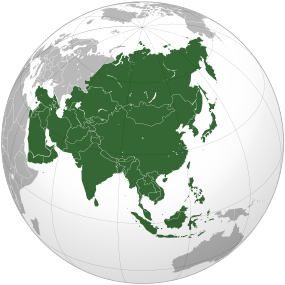Feeding The Asian: Agricultural R&D And Food Security – Analysis
By RSIS
Investing in agricultural R&D is certainly critical to safeguarding regional food security, but focusing on small farmers, preserving Asian diet, and cutting food loss and waste are equally, if not more, important.
By Zhang Hongzhou
ASIA’S ABILITY to feed itself is of great importance not only to the people of the region, but also to the world. Although Asia has lifted hundreds of millions of people out of poverty and ensured that they have plentiful, cheap supplies of food in the last several decades, the region still accounts for 65% of the world’s hungry population. Due to depletion of natural resources, declining rural labour force, and climate change, Asia’s food security is increasingly at risk.
In recent years, various measures have been proposed by scholars and implemented by the government to address the growing concern on regional food security, among which the role of technology is championed and prioritised. While enhancing agricultural R&D is certainly critical to safeguarding regional food security, focusing on small farmers, preserving Asian diet, and cutting food loss and waste are equally, if not more, important.
Focusing on small farmers

Many argue that the fundamental way to address food security is through science and technology. To feed Asia’s growing population, investing more in science and technology is undeniable critical. Yet, new technology can only have significant impact if the farmers know how to use it and have the incentive to adapt it. Unlike agriculture in the Western countries where large scale farming is common, small household farming will continue to dominate Asia’s agricultural sector in the foreseeable future. This means that the role of billions of small farmers is paramount in safeguarding regional food security.
On the one hand, small farmers are individual economic agents, who are largely, if not entirely, motivated by profit. On the other hand, small farmers, whose incomes mainly are derived from farming, are the most food insecure groups in the region. Therefore, policies that aim at safeguarding Asia food security have to start with making agriculture a profitable industry for the small farmers.
Furthermore, as small farmers tend to be the ultimate users of the agricultural technology in Asia, agricultural R&D has to be user-friendly and readily affordable to the farmers. Asian governments also need to provide timely training and education to enable the small farmers to effectively adapt the newly developed technologies.
Preserving Asian Diet
If Asians consumed food in the same way as the Westerners, it would be extremely challenging, if not impossible, to satisfy that level of demand for food even with modern farming techniques and better R&D. The Asian diet is very different from that of the West. The western diet is very heavy in meat, whereas Asians consume much more grain and vegetable, for instance, 31% of Indians are vegetarian. Considering that 7 kg of grain is needed to raise 1 kg of beef and 4 kg of grain for 1 kg of pork, much more grain would be needed to be produced should Asians consume more meat.
Although Asian diet is still needed to be enhanced with more meat and other protein-rich foodstuff it is proven to be healthier than that of the West. High levels of meat and saturated fat contribute to obesity and chronic diseases such as cardiovascular disease and diabetes in the West.
However, with deepening globalisation, Asia is being rapidly westernised, so is the Asian diet. With the explosive growth of Western fast food restaurants such as the McDonalds’, KFC and Burger Kings in the region, preserving Asian food culture is becoming ever more challenging. Thus, serious efforts have to be taken to preserve and promote Asian diet.
Cutting loss and waste
While much of the attention on regional food security has been given to enhancing food production, food loss and waste deserves some policy attention. Due to inadequate harvest techniques, poor storage and logistic and lack of suitable infrastructure, processing and packaging, eight to ten percent of grain and 25-30 percent of fruit and vegetables are lost annually in China. Similarly in India, each year around 10 percent of food produced is lost.
Growing food waste is also threatening regional food security. Food waste has been recognised as a serious problem in industrialised countries where, for instance, almost half of food in the United States goes to waste and over 10 million tonnes of food is wasted in Germany. However, in Asia, food waste problem is often overlooked. In the region, food waste has long been a serious problem in rich countries such as Japan and South Korea.
Increasingly, more and more food is wasted in the fast growing countries, particularly China and India. For other developing countries in Southeast Asia and South Asia, though per capita food wasted is quite low, the total amount of food wasted is quite significant, given the huge population size. Hence, actions are urgently needed to cut food loss and waste in the region.
As Italian Prime Minister Mario Monti recently claimed, the food crisis is deeper than the financial one. In Asia, due to increasing demand for food, depleting land and water resources, declining rural labour force, as well as the threat from climate change, food security may become the biggest threat to the region’s security and stability. In order to safeguard Asia’s food security, it is certainly important to invest more in agricultural R&D. But what must be remembered is that a thriving agricultural sector which can enrich and motivate the small famers is the best guarantor for Asia’s food security. Furthermore, educating the small farmers, preserving Asia’s diet and cutting losses and waste could make a dramatic and long-lasting contribution to Asia’s food security.
Zhang Hongzhou is a Senior Analyst with the China Programme at the S. Rajaratnam School of International Studies (RSIS), Nanyang Technological University where he obtained his MSc in International Political Economy. He previously studied at Harbin Institute of Technology in Heilongjiang, China.
